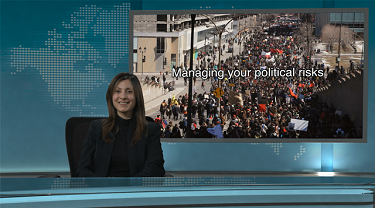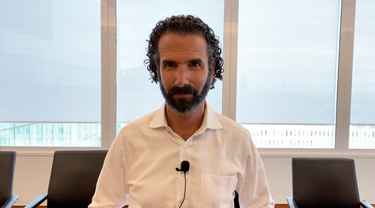
Exporters have a lot on their plates these days. Global growth is accelerating and Canadian companies are seeking to either establish or increase their footprint in diverse markets. At the same time, political risks dominate the headlines, muddling decision-making on when and where to do business. Included in this class of risks is the increasing presence of political violence, given its potential to significantly impact foreign investments and commercial operations. It’s a shocking reality; but is there a way that Canadian businesses operating internationally can protect themselves against the onset of political violence?
It’s an uncomfortable subject, but recent examples are manifold. The Arab Spring, which began in late 2010, abruptly toppled long-standing regimes in mere days. Change hit Turkey in the wake of a failed 2016 coup. Today, there’s ongoing terrorism risk in Egypt, war in Syria and North Korean nuclear threat concerns. Whether or not this is predictable, it entangles established business operations in debilitating ways.
What is political violence risk?
To elaborate, political violence risk, as we define it, covers a range of risks from protests, riots and terrorism, to rebellions, revolutions and coups. The defining feature is that these are politically motivated acts of violence aimed at changing a government or its policies. At EDC, we recently revised and updated our late 1990s vintage political violence risk assessment model. This tool provides a standardized framework in which we assess the likelihood of political violence risk in any country over a five-year horizon. Key to our model is its ability to evaluate the structural pre-conditions of risk – that is, factors that make a country vulnerable or predisposed to outbreaks of political violence.
How we assess political violence risk
How does our model do this? Clearly, no model can accurately predict the exact timing of an outbreak of violence or the triggering event that will motivate people to take to the streets in protest. However, our model’s robust structure, evolved out of almost two decades of analysis; its broad reach, covering just over 200 markets; and its reliance on comprehensive data sources allows us to assess the risk that, if certain preconditions exist among other factors, a country is more likely to experience an outbreak of political violence. So what do we look at?
Type of regime in power
The first lens is understanding what type of regime is in power, ranging from full autocracy, to partial autocracy to full democracy, as this influences risk in our model. Next up are variables which our analysis found to be among the best markers of risk. We discovered, for example, that higher infant mortality, lower trade openness, weaker democratic accountability and political freedoms are all key drivers of political violence risk.
Intervening variables
Next, we brought in intervening variables – those factors that dial risk up or down – such as the state’s military capacity. One of our best indicators involved the five-year trend analysis of human rights violations by the state against its citizens: the greater the propensity of the state to violate the physical rights of its citizens, the higher the risk of political violence.
Record of armed conflict
Lastly, we examined the country’s historical record of armed conflict. Countries with a history of conflict in the previous decade were found to be at greater risk of future conflict. All these metrics are then calculated to provide an ordinal rank of risk in a given market. Our final step is to overlay subject matter expertise by our country risk analysts on the quantitative model. The combined metrics and expert judgement allows the model to be best in class.
Why produce this type of model? Preparatory analysis is key to managing risk. If we can better understand which markets are at risk and how quickly those risks are evolving, we can get past the headline noise to help exporters seek out opportunities in markets where risk-aversion could dominate. Our country risk models help us do that.
The bottom line?
Political violence risk is intimidating and for good reason. But EDC can support you on your export and foreign investment journey through the provision of risk mitigation strategies, such as comprehensive political risk insurance coverage. With our input and advice, you can manage your political risks as you grow your exports abroad.




